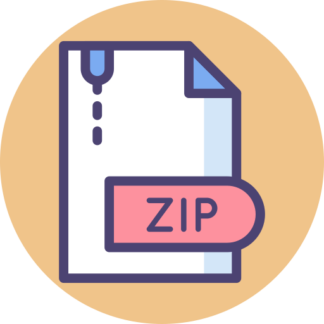Description
Comp346 Theory Assignment 1
Question # 1
I. What is an operating system? What are the main purposes of an operating system?
II. Define the essential properties of the following types of operating systems:
• Batch
• Time sharing
• Dedicated
• Parallel
• Multiprogramming
III. Under what circumstances would a user be better of using a time-sharing system
rather than a PC or single-user workstation?
Question # 2
Consider a computer system with a single-core processor. There are two processes to run in the
system: P1 and P2. Process P1 has a life cycle as follows: CPU burst time of 15 units, followed by
I/O burst time of minimum 10 units, followed by CPU burst time of 10 units. Process P2 has the
following life cycle: CPU burst time of 10 units, followed by I/O burst time of minimum 5 units,
followed by CPU burst time of 15 units. Now answer the following questions:
a) Considering a single programmed operating system, what is the minimal total time
required to complete executions of the two processes? You should explain your
answer with a diagram.
b) Now considering a multiprogrammed operating system, what is the minimal total
time required to complete executions of the two processes? You should explain your
answer with a diagram.
c) Throughput is defined as the number of processes (tasks) completed per unit time.
Following this definition, calculate the throughputs for parts a) and b) above. How
does multiprogramming affect throughput? Explain your answer.
Comp 346 Theory Assignment 1
Page 2
Redistribution or publication of this document or its text, by any means, is strictly prohibited.
Question # 3
I. What is the performance advantage in having device drivers and devices synchronize by
means of device interrupts, rather than by polling (i.e., device driver keeps on polling the device
to see if a specific event has occurred)? Under what circumstances can polling be advantageous
over interrupts?
II. Is it possible to use a DMA controller if the system does not support interrupts? Explain why.
IV. The procedure ContextSwitch is called whenever there is a switch in context from a running
program A to another program B. The procedure is a straightforward assembly language routine
that saves and restores registers, and must be atomic. Something disastrous can happen if the
routine ContextSwitch is not atomic.
(a) Explain why ContextSwitch must be atomic, possibly with an example.
(b) Explain how the atomicity can be achieved in practice.
Question # 4
I. If a user program needs to perform I/O, it needs to trap the OS via a system call that
transfers control to the kernel. The kernel performs I/O on behalf of the user program.
However, systems calls have added overheads, which can slow down the entire
system. In that case, why not let user processes perform I/O directly, without going
through the kernel?
II. Consider a computer running in the user mode. It will switch to the monitor mode
whenever an interrupt or trap occurs, jumping to the address determined from the
interrupt vector.
(a) A smart, but malicious, user took advantage of a certain serious loophole
in the computer’s protection mechanism, by which he could make run his
own user program in the monitor mode! This can cause disastrous effects.
What could have he possibly done to achieve this? What disastrous effects
could it cause?
(b) Suggest a remedy for the loophole.
Question # 5
Suppose that a multiprogrammed system has a load of N processes with individual execution
times of t1, t2, …,tN. Answer the following questions:
a) How would it be possible that the time to complete the N processes could be as small as:
maximum (t1, t2, …,tN)?
Redistribution or publication of this document or its text, by any means, is strictly prohibited.
b) How would it be possible that the total execution time, T > t1+ t2+ …+tN? In other words,
what would cause the total execution time to exceed the sum of individual process
execution times?
Question # 6
Which of the following instructions should be privileged? Explain why.
(i) Read the system clock,
(ii) Clear memory,
(iii) Reading from user space
(iv) Writing to user space
(v) Copy from one register to another
(vi) Turn off interrupts, and
(vii) Switch from user to monitor mode.
Question # 7
Assume you are given the responsibility to design two OS systems, a Network Operating System
and a Distributed Operating System. Indicate the primary differences between these two systems.
Additionally, you need to indicate if there any possible common routines between these systems?
If yes, indicate some of these routines. If no, explain why common routines between these two
particular systems do not make sense.





